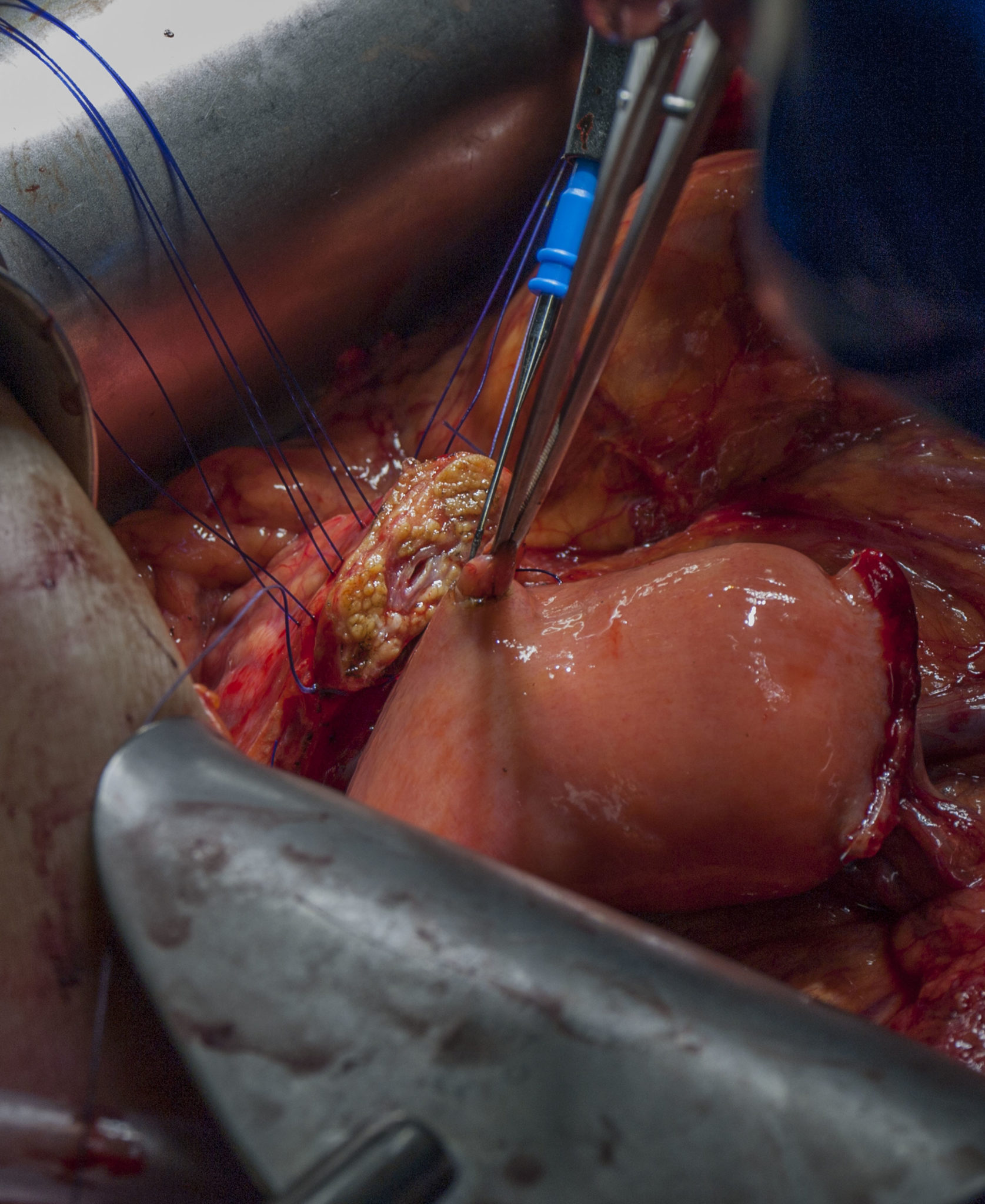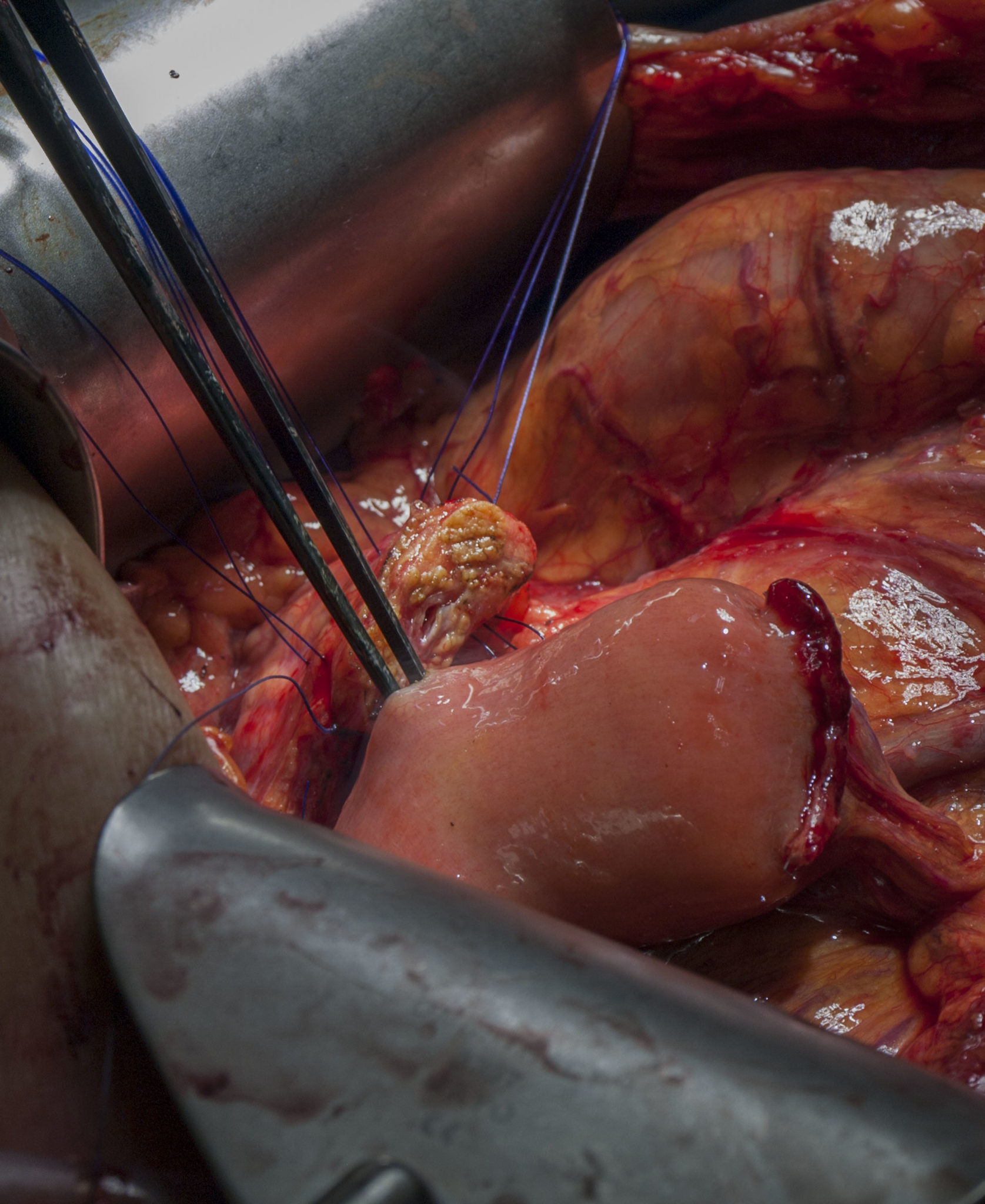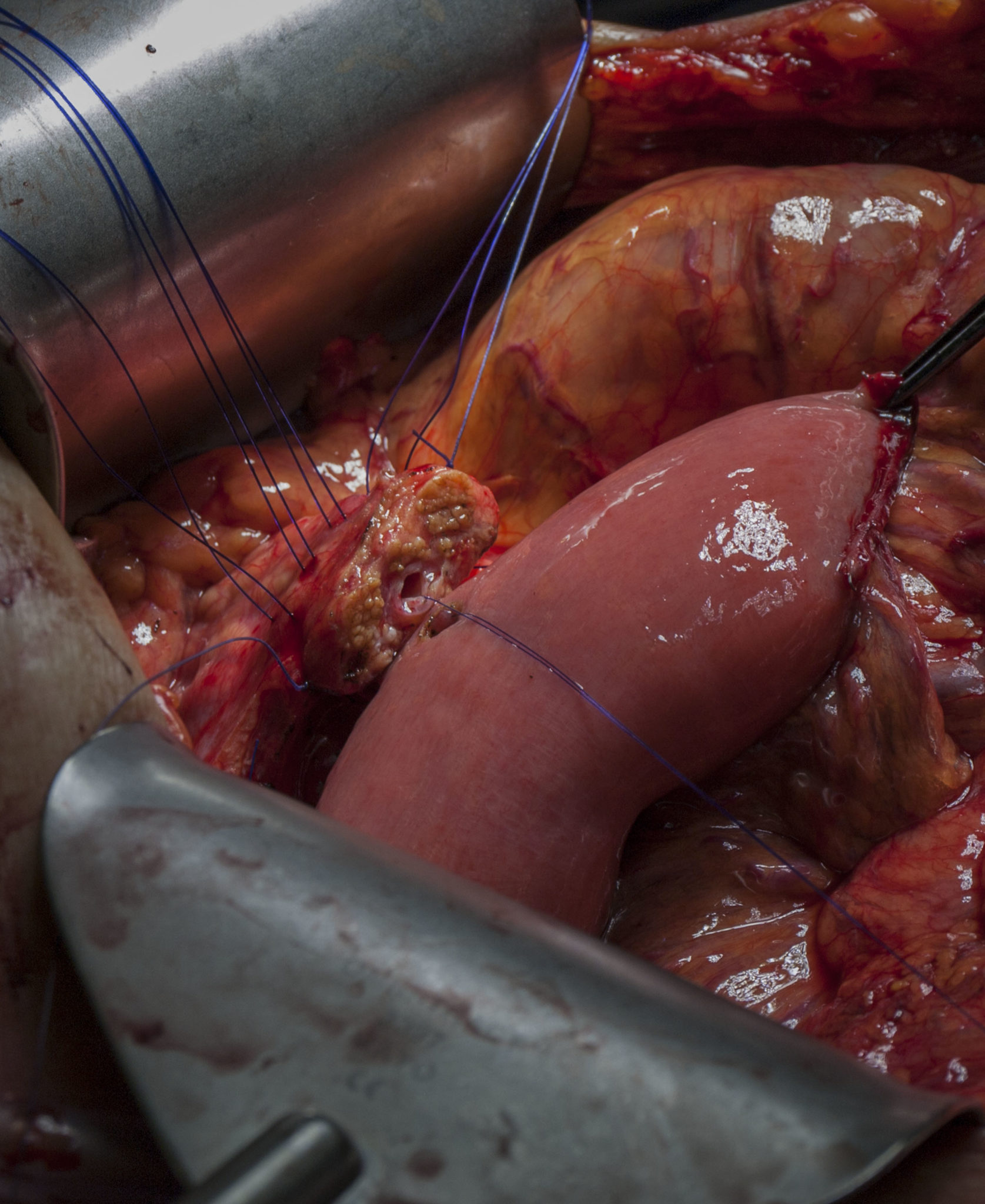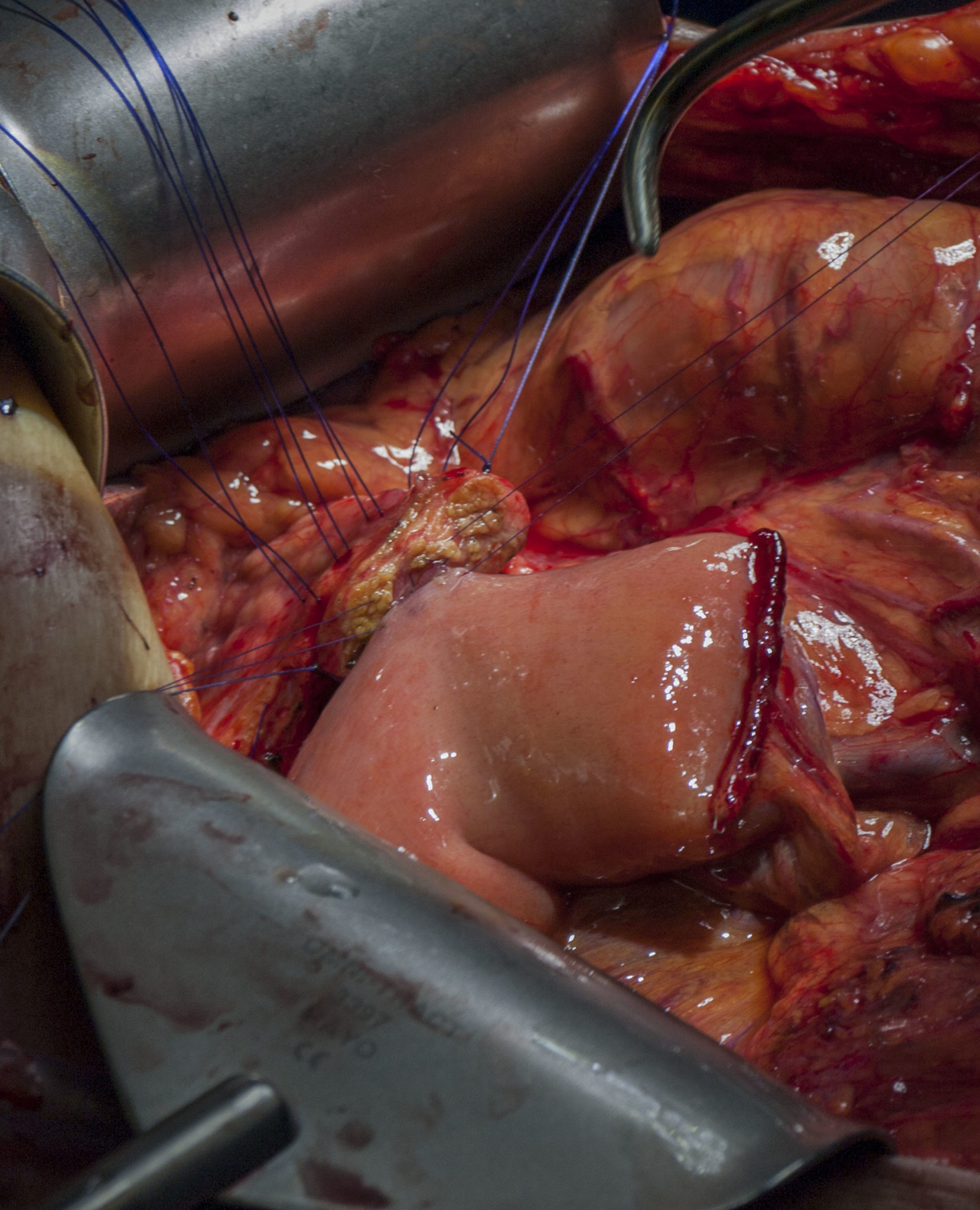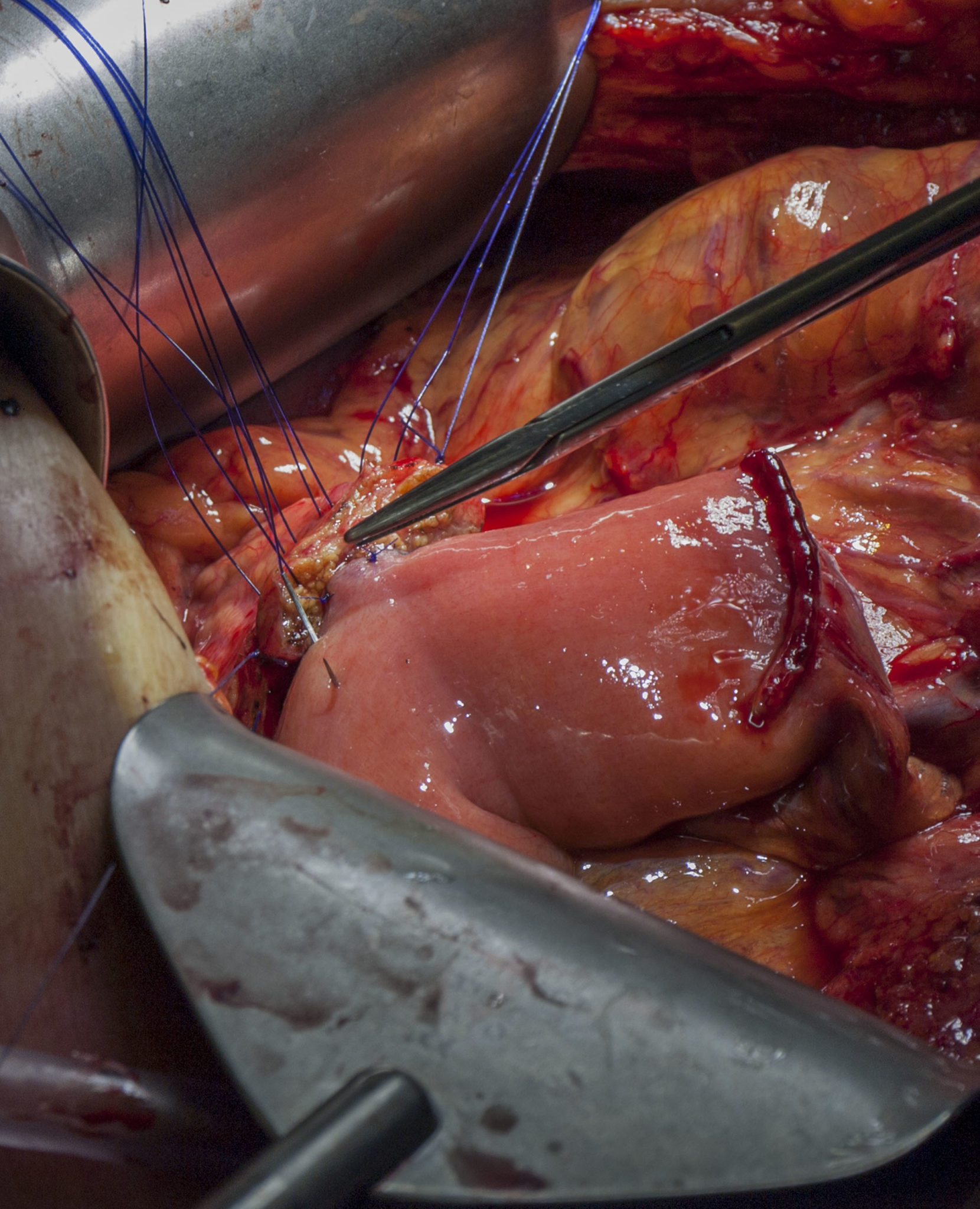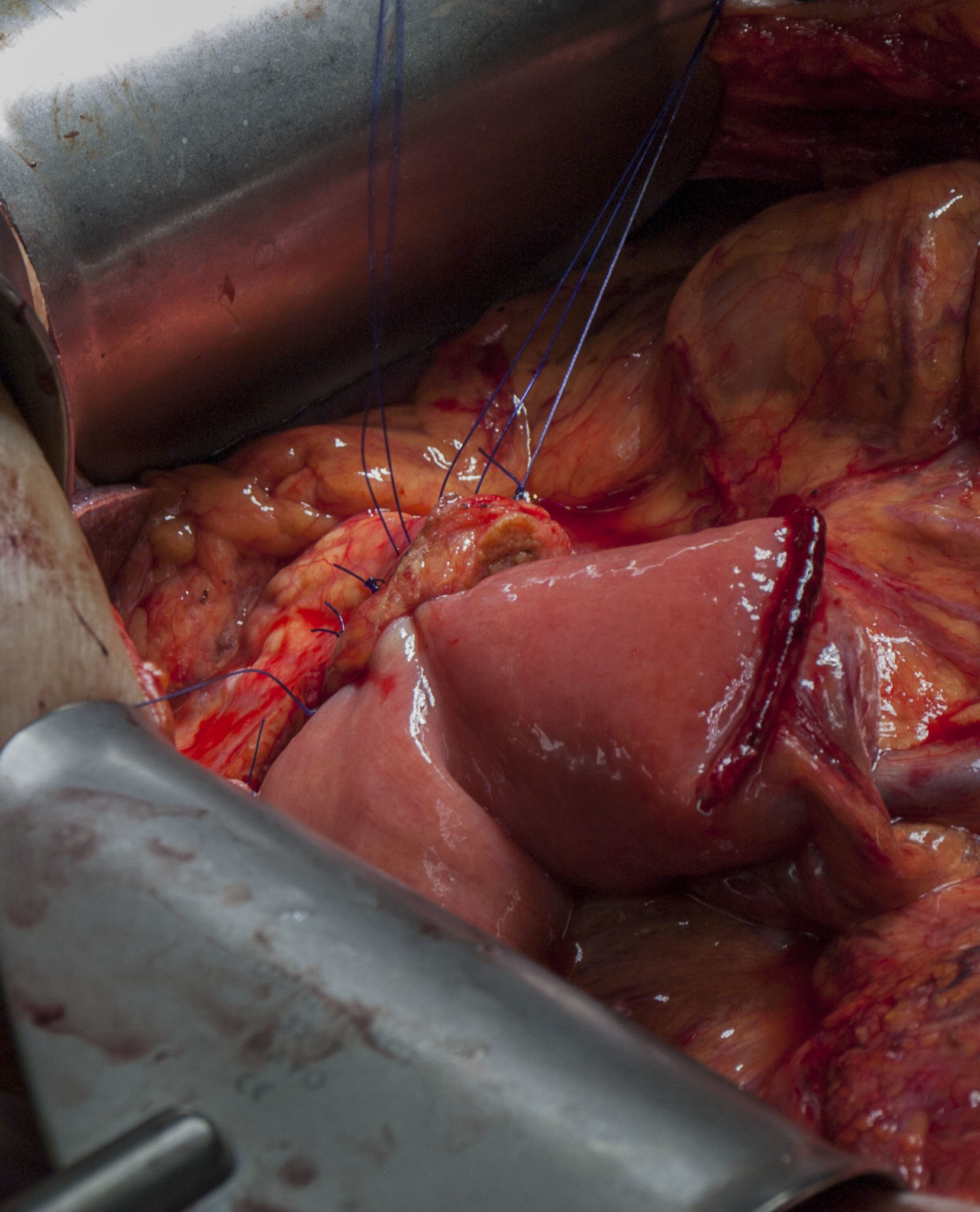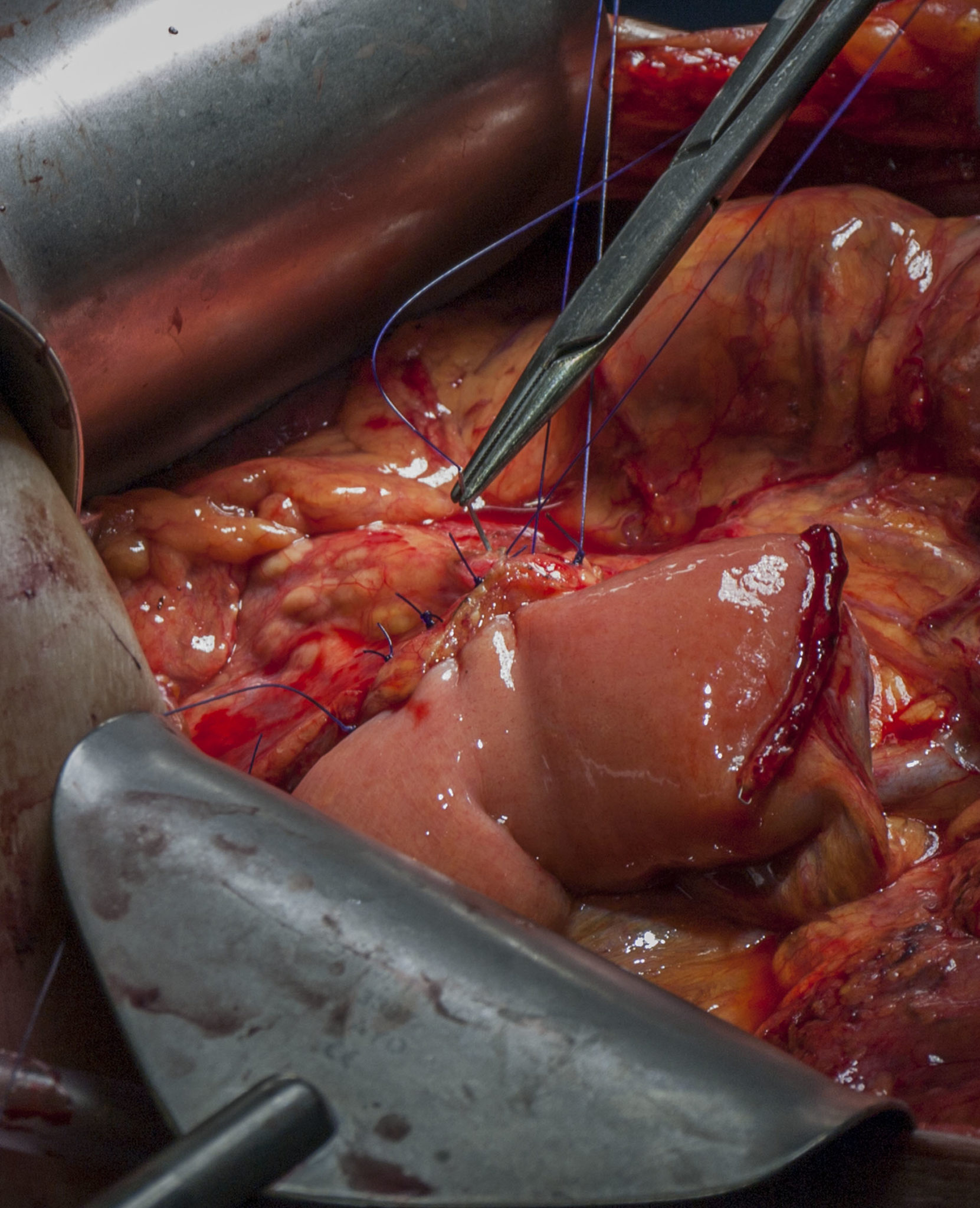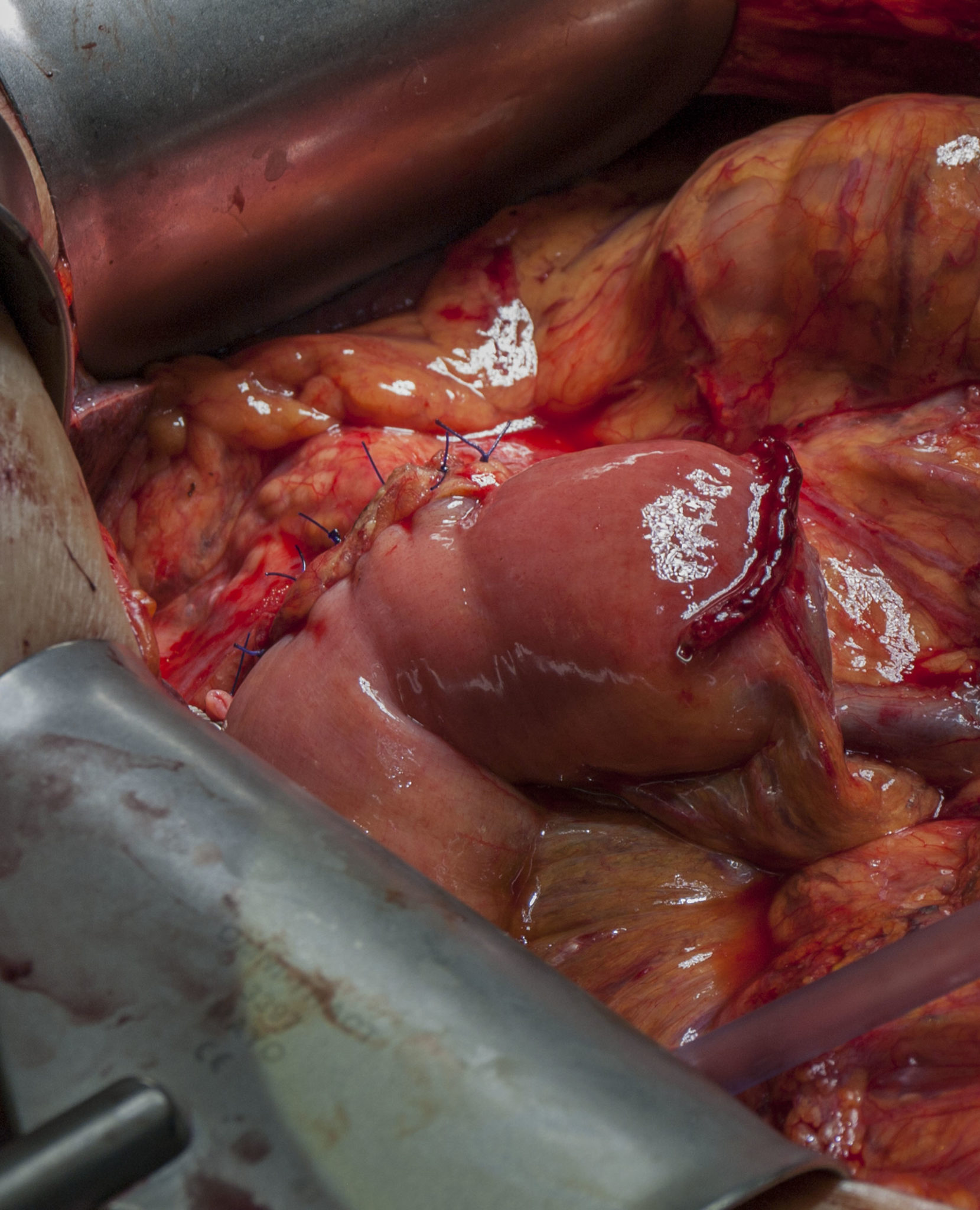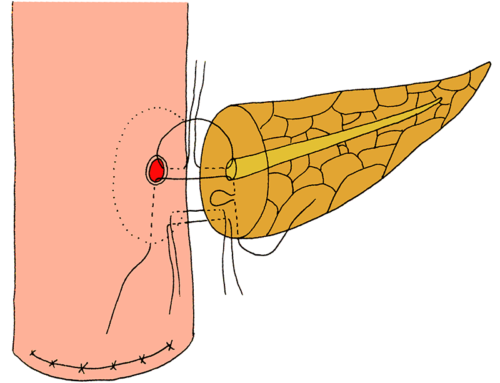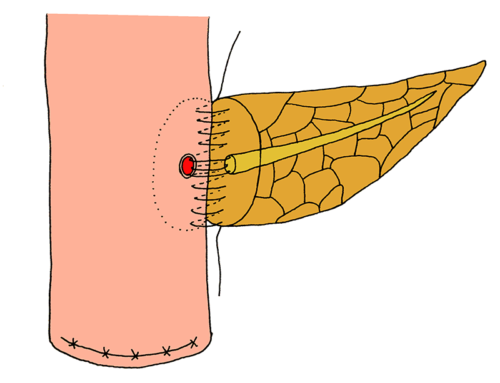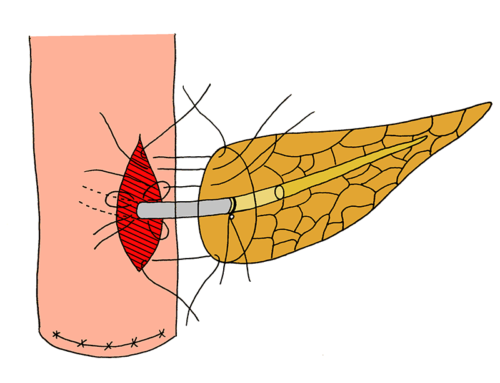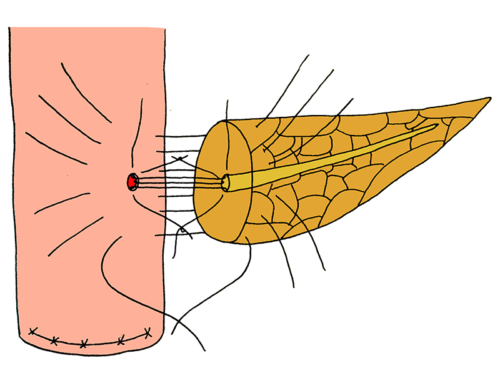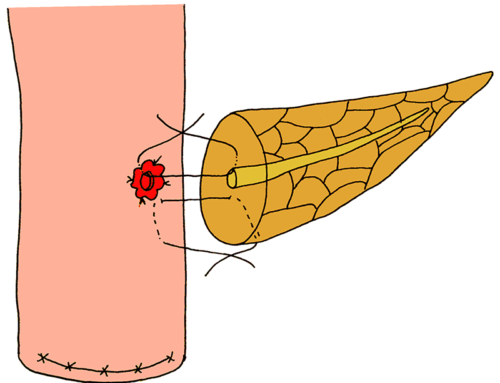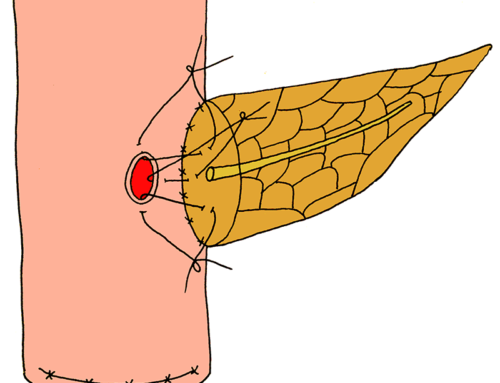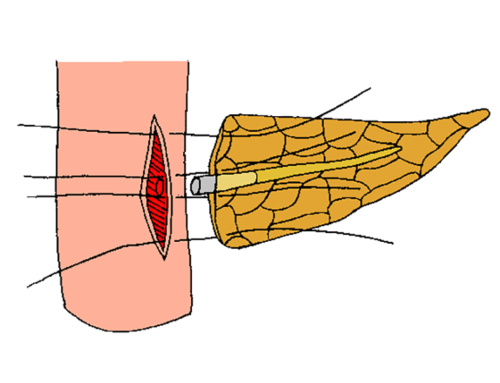An opening is made in the seromuscular side wall of the jejunum, with a size similar to the diameter of the pancreas. The Blumgart anastomosis is constructed by four to six transpancreatic U-sutures: two to three on each side of the main pancreatic duct. Suture-threads with a needle on both ends are used.
Blumgart pancreatojejunostomy
- An opening is made in the seromuscular side wall of the jejunum, with a size similar to the diameter of the pancreas.
- The Blumgart anastomosis is constructed by four to six transpancreatic U-sutures: two to three on each side of the main pancreatic duct. Suture-threads with a needle on both ends are used.
- The suturing starts at the anterior side of the pancreatic stump, about 1 cm away from the cut end: the pancreatic gland is penetrated by each suture from anterior to posterior, after which a seromuscular bite of the posterior jejunal wall is taken. From posterior to anterior, each suture goes back again through the full-thickness of the pancreatic parenchyma. Herewith, the U-suture is completed and the posterior sides of the pancreatic remnant and jejunum are approximated. The U-sutures are kept separately for later completion of the anastomosis.
- A small opening is created in the jejunum, through the full-thickness of the jejunal wall.
- A duct-to-mucosa anastomosis is constructed circumferentially between the cutting edges of the new-made opening in the jejunal wall and the main pancreatic duct.
- The previously held U-sutures are tied on the anterior capsule of the pancreas and placed through the seromuscular coat of the jejunum at the anterior edge of the seromuscular jejunal incision. Each suture is then stitched through the pancreatic capsule anteriorly, with the needle passing under the previously tied suture, so that the pancreas is covered by the anterior seromuscular wall of the jejunum. The anastomosis is completed by tying the U-sutures on the anterior capsule of the pancreatic stump.
Modifications of the Blumgart-technique have been described: suturing with the preserved U-sutures can be continued without first tying them on the anterior capsule of the pancreas. Also, the U-sutures can be tied on the anterior seromuscular jejunal wall after passing the needles through the anterior edge of the seromuscular incision; the anastomosis is hereby completed without penetrating the pancreatic gland ones more.
- Halloran CM, Platt K, Gerard A, et al. PANasta Trial; Cattell Warren versus Blumgart techniques of panreatico-jejunostomy following pancreato-duodenectomy: Study protocol for a randomized controlled trial. Trials. 2016;17.
- Kleespies A, Rentsch M, Seeliger H, Albertsmeier M, Jauch KW, Bruns CJ. Blumgart anastomosis for pancreaticojejunostomy minimizes severe complications after pancreatic head resection. Br J Surg. 2009;96:741-750.
- Mishra PK, Saluja SS, Gupta M, Rajalingam R, Pattnaik P. Blumgart’s technique of pancreaticojejunostomy: an appraisal. Dig Surg. 2011;28:281-287.
- Fujii T, Sugimoto H, Yamada S, et al. Modified Blumgart Anastomosis for Pancreaticojejunostomy: Technical Improvement in Matched Historical Control Study. J Gastrointest Surg. 2014.
- Oda T, Hashimoto S, Miyamoto R, et al. The Tight Adaptation at Pancreatic Anastomosis Without Parenchymal Laceration: An Institutional Experience in Introducing and Modifying the New Procedure. World J Surg. 2015;39:2014-2022.
- Oda T, Hashimoto S, Shimomura O, et al. Inter-Anastomosis Drainage Tube between the Pancreas and Jejunum: A Novel Technique for Preventing Pancreatic Fistula after Pancreaticoduodenectomy. J Am Coll Surg. 2015;221:e55-e60.
- Neychev VK, Sladinger PF. Minimizing shear and compressive stress during pancreaticojejunostomy: rationale of a new technical modification. JAMA Surg. 2014;149:203-207.










